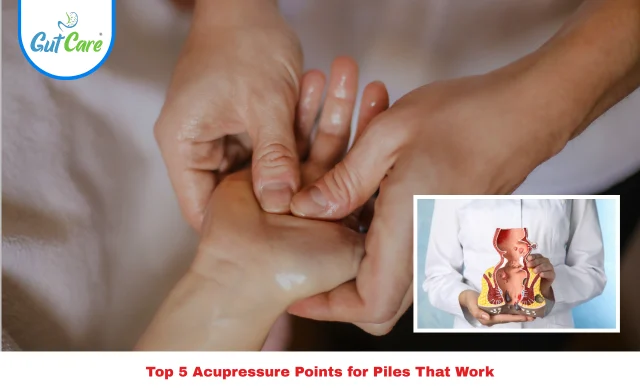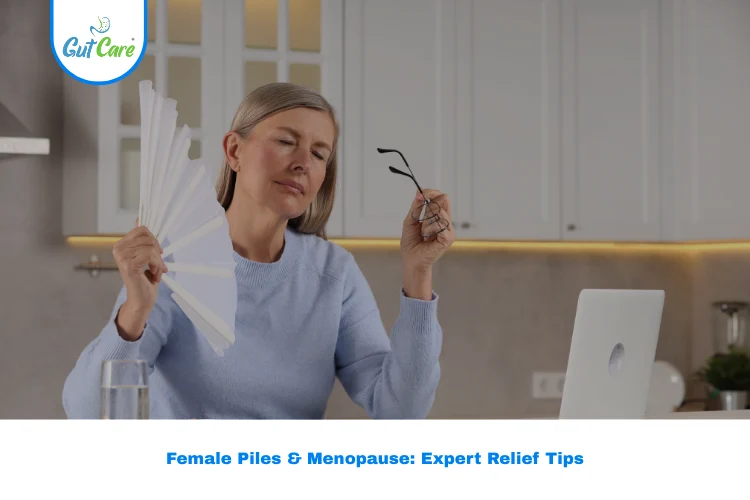For anyone who’s suffered the pain, itching, and discomfort of piles (hemorrhoids), you know how frustrating and persistent the condition can be. While creams and surgeries offer short-term solutions, more people are exploring natural methods like acupressure. And yes—acupressure points for piles may actually provide real relief when done right.
Unlike conventional treatments, acupressure is a non-invasive technique rooted in Traditional Chinese Medicine (TCM). By stimulating specific pressure points in the body, it helps ease symptoms like swelling, constipation, and pain, all without medication. Let’s dive into how this ancient practice is helping modern patients manage piles naturally.
What Are Acupressure Points for Piles?
Acupressure points for piles refer to specific areas on the body that, when pressed, can stimulate healing responses. These points lie along meridians—energy channels believed to influence different organs. For piles, the goal is to stimulate bowel function, reduce inflammation, and improve blood circulation in the rectal area.
The concept comes from ancient Eastern medicine, where energy flow (Qi) is key to wellness. Blocked energy around the digestive system and lower body can contribute to conditions like hemorrhoids. By applying firm, steady pressure on certain points, acupressure can help clear blockages and restore balance.
These points don’t just reduce piles symptoms. They often also help with constipation, digestion, stress, and even poor circulation—factors that either cause or worsen piles.
How Does Acupressure Help With Piles?
The magic lies in pressure and consistency. When you activate acupressure points for piles, you’re not just pressing skin—you’re stimulating nerves, soft tissues, and even vascular flow around affected areas.
Here’s how acupressure helps:
- Improves blood circulation: Boosts flow to the rectal area to reduce swelling.
- Relieves constipation: Stimulates the intestines to move waste more efficiently.
- Reduces inflammation: Helps calm inflamed tissues naturally.
- Eases pain and itching: Blocks pain signals and calms irritated nerves.
- Lowers stress: Chronic stress can worsen piles—acupressure lowers cortisol levels.
While it’s not a magic bullet, regular sessions can be a game-changer for anyone looking for non-surgical piles relief. It’s especially useful when used alongside dietary and lifestyle changes.
Best Acupressure Points for Piles Relief
Here are some of the most effective acupressure points for piles that therapists often target:
1. Large Intestine 4 (LI4) – Hegu
Location: Between the thumb and index finger
This point is known for its ability to relieve pain and inflammation. It also promotes bowel movement and reduces digestive tension—common triggers for piles.
How to Use: Use your opposite thumb to press firmly into the fleshy area between your thumb and index finger. Hold for 1–2 minutes while breathing deeply. Repeat 1–2 times daily.
2. Perineum (CV1) – Huiyin
Location: Between the anus and genitals
This is a core point for rectal and urinary issues. Applying gentle pressure here can directly influence piles symptoms, especially pain and swelling.
How to Use: While seated comfortably, gently press the area using your middle or index finger. Apply steady pressure for 1–2 minutes. For hygiene and safety, ensure your hands are clean or use a soft cloth.
3. Stomach 36 (ST36) – Zusanli
Location: Four fingers below the kneecap, on the outer leg
This powerpoint helps regulate digestion, ease bloating, and improve overall gut function. It also boosts energy levels, which aids healing.
How to Use: Sit comfortably, then use your thumb to press firmly on ST36. You may feel a slight soreness or tingling—that’s normal. Hold for 1–2 minutes per leg.
4. Bladder 57 (BL57) – Chengshan
Location: Center of the calf muscle
Known for its direct effect on hemorrhoid discomfort, BL57 reduces pain, soothes swelling, and supports rectal function.
How to Use: Sit or lie down with your leg extended. Press your thumbs into the midpoint of your calf muscles and hold for 1–2 minutes on each leg.
5. Governing Vessel 20 (GV20) – Baihui
Location: Top of the head
Though it’s far from the affected area, this point helps control energy flow and reduce internal pressure. It’s often used to treat stress-induced digestive problems.
How to Use: Gently press the crown of your head with two fingers. Use circular motions while applying light pressure for 1–2 minutes. This can be done seated or lying down.
Apply pressure 1–2 times daily. Use your thumb or index finger to press and hold firmly but not painfully. Deep, steady breathing enhances the effect.
Traditional Chinese Medicine and Piles: A Holistic View
Acupressure is only one aspect of Traditional Chinese Medicine (TCM). TCM views piles as a symptom of imbalances—often linked to liver heat, poor spleen function, or stagnation of Qi in the intestines.
This holistic lens means a therapist might combine acupressure with:
- Herbal remedies
- Dietary recommendations
- Breathing techniques
- Massage (Tui Na)
So if you’re serious about natural treatment for piles, acupressure works best as part of a broader wellness plan.
How Long Does It Take to See Results?
Consistency is key. Some patients report reduced itching and pain after a few sessions. Others may take a few weeks to feel substantial improvement.
Unlike creams or painkillers, acupressure points for piles offer deeper, long-lasting relief by addressing the root cause—not just the surface symptoms.
Can You Do Acupressure at Home?
Yes! One of the best parts about acupressure is that you don’t always need a specialist. Once you learn where the pressure points are, you can apply gentle pressure at home using your hands or a rounded tool.
However, it’s wise to consult a trained therapist first, especially if you have internal piles, bleeding, or chronic digestive issues. And never apply pressure to broken or severely inflamed skin.
Precautions to Keep in Mind
- Avoid acupressure during pregnancy without medical guidance.
- Never press on open wounds or swollen veins directly.
- Stop if you feel sharp pain or dizziness.
- Always pair acupressure with hydration, a fiber-rich diet, and gentle exercise for best results.
Final Thoughts: A Gentle Yet Powerful Remedy
If you’ve been dealing with recurring hemorrhoids and are tired of chemical creams or surgical options, acupressure points for piles might just be the natural solution your body’s been waiting for.
It’s safe, non-invasive, and rooted in centuries-old wisdom. More importantly, it gives you a hands-on way to take control of your health—without relying solely on prescriptions or procedures.
As with all holistic treatments, results come with consistency, care, and a willingness to listen to your body. So why not press pause on piles the natural way—literally?
Visit Gutcare Clinics For Expert Care!
5 FAQs on Acupressure Points for Piles
1. What are acupressure points for piles?
They are specific body points that, when pressed, help relieve hemorrhoid symptoms like pain, swelling, and constipation by improving blood flow and digestion.
2. Is acupressure effective for hemorrhoid pain relief?
Yes, when done consistently, it helps manage piles discomfort by easing inflammation and promoting better bowel health.
3. Can I treat piles at home with acupressure?
You can learn to apply pressure on certain points at home, but it’s best to consult a therapist initially for correct technique and point location.
4. How often should I do acupressure for piles?
1–2 times daily for 5–10 minutes is usually safe. Avoid overstimulation and adjust frequency based on your body’s response.
5. What else can I do with acupressure for faster relief?
Follow a fiber-rich diet, stay hydrated, do light exercise, and manage stress. Acupressure works best as part of a full wellness approach.




